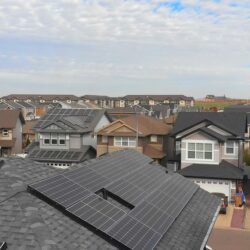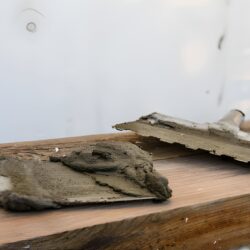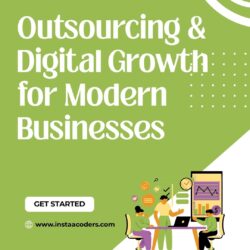Running a business often means making tough financial decisions. I remember when I first started out, every purchase felt like a test of faith. Especially when it came to essential tools and machinery, the question was always the same: should I buy or lease? That’s how I first came across the concept of an Equipment Lease, and it changed the way I handled business expenses forever.
An equipment lease is a practical way to use the equipment your business needs without taking on the full financial burden of buying it outright. It’s like having the best of both worlds—you get access to essential tools, but you keep your working capital free for other expenses. Many business owners I’ve worked with through MH Car Lease have discovered that leasing isn’t just a cost-saving trick, it’s a growth strategy.
What is an Equipment Lease?
Simply put, an Equipment Lease is an agreement that allows a business to use specific equipment for a fixed period by paying regular installments. The leasing company owns the equipment, and you use it as if it were yours. At the end of the lease, you can either return the equipment, renew the lease, or sometimes buy it at a reduced price.
It’s similar to renting an apartment. You live in it, take care of it, and enjoy its benefits, but you don’t carry the financial weight of ownership. The key difference is that with business equipment, this setup can directly affect your bottom line.
Why Businesses Choose Equipment Leasing
The main reason businesses prefer equipment leasing is simple: flexibility. When I started using equipment leases in my own projects, I realized I could expand faster without draining my budget. Instead of saving for months or taking a big loan to buy machinery, I could lease what I needed and start working right away.
Here are a few major advantages:
-
Preserve Cash Flow: Leasing spreads out costs into manageable monthly payments, which helps maintain a steady cash flow.
-
Upgrade Easily: Technology changes fast. Leasing lets you replace outdated equipment at the end of the term.
-
Tax Benefits: In many cases, lease payments can be deducted as business expenses.
-
No Large Upfront Cost: Instead of spending thousands at once, you can lease and keep your capital free for other investments.
When I first started MH Car Lease, I used this model to finance office systems and transport vehicles. It saved me from early financial stress and allowed me to focus on growing the business instead of worrying about debt.
Equipment Lease Agreement Explained
Before signing anything, it’s important to understand what’s in an equipment lease agreement. It outlines all the terms, including the payment schedule, duration, and maintenance responsibilities. Some companies include a buyout clause, which gives you the option to purchase the equipment at the end of the term.
Always review the details carefully. I once signed a lease for a small piece of construction equipment without reading the fine print. It turned out I was responsible for all repairs, even though I only used it for a few months. That experience taught me that understanding the equipment lease terms and conditions is just as important as getting the equipment itself.
Lease vs Buy Equipment: Which is Better?
This is a classic question for business owners. Should you lease or buy? The answer depends on your goals and cash position.
If you want ownership and long-term use, buying might be right. But if you value flexibility, updated technology, and predictable costs, leasing often makes more sense.
For example, a restaurant owner who leases kitchen equipment can easily upgrade when newer models hit the market. On the other hand, a farmer using heavy machinery for decades might find buying more practical.
When I compared the two for MH Car Lease, leasing vehicles and tools made more financial sense. It allowed me to test different options and scale my services without tying up capital.
How Equipment Leasing Works
The process is simple but structured. You choose the equipment, contact a leasing provider, and negotiate the terms. Once approved, you start using the equipment after signing the equipment lease contract.
Here’s how it usually goes:
-
Select the equipment: Choose what you need for your operations.
-
Get quotes: Contact leasing companies for their rates.
-
Apply for a lease: Provide business and financial details.
-
Review the agreement: Check all the conditions carefully.
-
Start using it: Once approved, the equipment is delivered or made available.
Many equipment leasing companies simplify this process. I’ve worked with several providers who offered custom terms that fit my business cycle perfectly.
Types of Equipment Lease
Not all leases are the same. Understanding the types helps you pick what fits your business best.
-
Operating Lease: You rent equipment for a short term. Ideal for quickly changing industries.
-
Finance Lease: Similar to a loan, where you pay toward ownership.
-
Sale and Leaseback: You sell your owned equipment to a leasing company and lease it back to free up cash.
-
Capital Lease: Long-term arrangement that can end with you owning the equipment.
At MH Car Lease, we often recommend operating leases to clients who need equipment temporarily or plan to upgrade soon.
Costs and Lease Rates
Equipment lease rates depend on the type of equipment, duration, and your credit profile. Short-term leases usually cost more per month but offer flexibility. Long-term leases reduce the monthly payment but lock you in longer.
To make smart choices, always use an equipment lease calculator. It gives a clear picture of total costs and helps compare different lease options.
In my case, when leasing office equipment, I calculated the cost difference between a 12-month and a 36-month plan. The longer lease was cheaper per month but less flexible. I chose a middle-ground plan that matched my projected growth.
How Equipment Leasing Helps Startups
For startups, leasing can be a lifeline. You can get the machinery, technology, or vehicles you need without heavy investment. It’s particularly useful for small businesses that can’t secure big loans yet.
I remember a friend who launched a food truck business. Instead of buying expensive kitchen appliances, he went for an equipment lease for startups. Within months, he was profitable enough to consider expanding.
Choosing the Right Equipment Lease Provider
With so many equipment lease providers, choosing the right one is crucial. Look for these factors:
-
Transparent pricing
-
Flexible lease terms
-
Clear maintenance policies
-
Good customer support
-
Industry reputation
When MH Car Lease partners with other leasing firms, we prioritize those that offer transparent agreements and fair buyout options. It protects both our business and our clients.
Understanding the Cost of Leasing Equipment
Before committing, always analyze the cost of leasing equipment. It’s not just about monthly payments. Include potential fees, insurance, and end-of-lease costs. A low monthly payment might look attractive, but hidden fees can add up.
I once compared three providers for a construction project. The lowest rate came with an expensive return clause. The middle option, though slightly higher per month, was better overall.
Benefits of Leasing Equipment
If you’re still unsure, consider these core benefits of leasing equipment:
-
Keeps debt off your balance sheet
-
Provides access to the latest technology
-
Improves operational efficiency
-
Reduces financial risk
-
Simplifies budgeting
In my journey with MH Car Lease, this approach helped me grow steadily without taking unnecessary risks. Every upgrade or expansion felt manageable and well-timed.
Common Mistakes to Avoid
Even though leasing is practical, some businesses make avoidable mistakes:
-
Signing without reading terms
-
Ignoring maintenance costs
-
Choosing the wrong lease length
-
Not comparing multiple providers
Avoiding these mistakes can save you money and headaches. My early experiences taught me to read every clause twice and always ask questions before signing.
When to Consider Equipment Leasing
If you need new equipment but don’t want to impact your cash flow, or if you work in a rapidly evolving industry, leasing makes sense. For instance, tech startups that rely on frequent hardware upgrades benefit immensely from short-term leases.
On the other hand, businesses with stable equipment needs can explore long-term commercial equipment leases to reduce costs over time.
How to Lease Equipment for Business
The steps are straightforward, but the key is preparation.
-
Identify what equipment your business truly needs.
-
Estimate your budget using a calculator.
-
Contact reliable leasing companies.
-
Negotiate the terms before signing.
When MH Car Lease expanded into a new region, we followed these exact steps to lease fleet vehicles. It allowed us to enter the market fast without financial strain.
Final Thoughts
Choosing an Equipment Lease is not just a financial decision, it’s a strategic move that affects how your business grows. Whether you’re a startup or an established company, leasing offers flexibility, cost control, and access to the latest technology without ownership hassles.
From my experience with MH Car Lease and countless business projects, I’ve learned that leasing is about more than saving money. It’s about freedom—the freedom to grow, test, and adapt.
If you’re considering how to lease equipment for your business, start small, compare your options, and never hesitate to ask for expert advice. Leasing could be the smartest move you make this year for your business growth.





